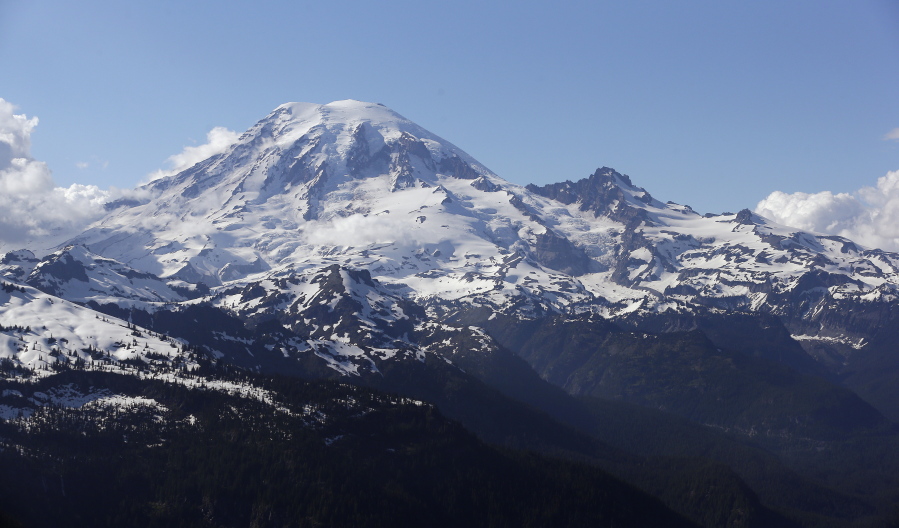MOUNT RAINIER NATIONAL PARK — Two climbers used skills, smarts and a shovel to survive two days of blizzard conditions near the summit of Mount Rainier, authorities said.
The men were trapped June 17 when the weather took a sudden turn, The News Tribune reported Thursday.
Mark Duggin of Cookesville, Tenn., and Brad Davidson, of Littleton, Colo., fought to survive a storm with 50 mph winds and subzero temperatures.
“If these were not smart, tough guys, this would have ended a lot differently,” said Peter Ellis, a park climbing ranger involved in the rescue.
Davidson was taken to a hospital and is expected to be OK. Duggin suffered frostbite and could need six months to determine whether he will regain all feeling, his father said.
Davidson, Duggin and Thad Drake — all in their late 30s and friends since they attended Tennessee Tech — were at Camp Muir on June 16 when park climbing rangers circulated the latest weather report.
It indicated there was a window of opportunity to reach the summit the next morning, Ellis said, but the weather likely would get worse in the afternoon. Davidson and Duggin started climbing before dawn. Drake, feeling fatigued, chose to wait at Camp Muir.
As most mountaineers do, Davidson and Duggin dropped their heavy packs on the eastern side of the crater rim then hiked about a quarter-mile across the crater to ascend the summit register and Columbia Crest, the highest point on the 14,411-foot mountain.
They were on top by about 8:30 a.m., Ellis said, when the weather changed.
“It came in harder and faster than we expected,” he said. “Shockingly fast.”
In a matter of minutes, the climbers couldn’t see. They went back into the crater and tried to find their gear but with their digital compass and GPS frozen and their magnetic compass still in the pack, they were essentially lost. The rock and ice climbers kept their composure, and their next move impressed Ellis.
“I’m not sure I would have thought of it,” he said.
Knowing their gear was stashed on the crater rim and knowing the rim was a huge circle, they found its rocky perimeter and made their way along it for about 75 minutes. They were careful to stay on the rocks and avoid areas where they might fall up to 5 feet through the snow and ice.
Eventually they found their gear.
“We wouldn’t have had a chance without our packs,” Duggin said.
They started down the mountain but quickly realized it was a futile and dangerous idea.
They sent a distress signal via a personal locator beacon they carried with them. Rangers got the message in minutes, but conditions were not safe enough to dispatch a rescue team.
When Drake, the climber who stayed behind, told Ellis that both climbers carried shovels, “my first thought was they have a fighting chance,” Ellis said.
Digging in the ice, they managed to chip out a hole just deep enough for them to lie down. They covered it with a tarp, put on their down jackets and shared a sleeping bag.
The skies cleared overnight on the second night and Davidson and Duggin poked out of their cave and decided to make their move. They descended about 1,200 feet when they saw a rescue helicopter.
A helicopter landed at about 13,200 feet to fly them off the mountain. Minutes later, they were safe.



